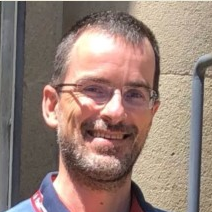Glass-Ceramics: A Key Technology for Advanced Engineering Applications
A special issue of Solids (ISSN 2673-6497).
Deadline for manuscript submissions: closed (31 March 2024) | Viewed by 2719
Special Issue Editor
Interests: cellular glasses and glass-ceramics; glass sintering; glass and glass-ceramic matrix composites; polymer-derived ceramics; silicate bioceramics; phosphate ceramics; additive manufacturing of ceramics
Special Issues, Collections and Topics in MDPI journals
Special Issue Information
Dear Colleagues,
I am pleased to invite you to contribute to a Special Issue of Solids dedicated to glass-ceramics as a milestone for advanced engineering applications. As pointed out by Prof. E.D. Zanotto, a top researcher on glass crystallization, the conversion of glasses into glass-ceramics discloses an overwhelming ‘hidden beauty’. The beauty of glass-ceramics actually goes well beyond aesthetics. In fact, the tuning of conversion of a homogeneous glass into crystal phases embedded in more or less abundant residual glassy phase offers a distinctive control on structural and functional properties, and also on processing. As an example, the cooperation between glass and crystal phases is essential in glass-ceramics for bone tissue applications as well as in glass-ceramics for advanced optical applications or in ceramic joining. The delicate balance between viscous flow sintering and crystallization, in systems sensitive to surface nucleation, offers interesting possibilities of topological control of scaffolds produced by application of additive manufacturing technologies. Particular couplings of crystal phase and glass matrix are also references for technologies, e.g., relying on preceramic polymers or on alkali activation of natural or industrial silicates and alumino-silicates, not strictly leading to a homogeneous glass as intermediate processing step.
This Special Issue aims to collect the latest experiences on glass-ceramics for advanced applications, from the widest range of raw materials and processing strategies.
In this Special Issue, original research articles and reviews are welcome. Research areas may include (but not limited to) the following:
- Nanostructured glass-ceramics (e.g., transformation-toughened);
- Glass-ceramics for functional applications (e.g., optical applications);
- Glass-ceramics for structural applications (e.g., dense and porous construction materials);
- Bioactive and biocompatible glass-ceramics (e.g., materials for bone tissue applications, materials for dental applications);
- Glass-ceramics from unconventional precursors (e.g., preceramic polymers, alkali activated materials);
- Glass-ceramics for environmental applications (e.g., from waste upcycling or involved in environmental remediation);
- Reactive sintering of glass and glass-based mixtures;
- Additive manufacturing technologies supported by glass-ceramics.
I look forward to receiving your contributions.
Dr. Enrico Bernardo
Guest Editor
Manuscript Submission Information
Manuscripts should be submitted online at www.mdpi.com by registering and logging in to this website. Once you are registered, click here to go to the submission form. Manuscripts can be submitted until the deadline. All submissions that pass pre-check are peer-reviewed. Accepted papers will be published continuously in the journal (as soon as accepted) and will be listed together on the special issue website. Research articles, review articles as well as short communications are invited. For planned papers, a title and short abstract (about 100 words) can be sent to the Editorial Office for announcement on this website.
Submitted manuscripts should not have been published previously, nor be under consideration for publication elsewhere (except conference proceedings papers). All manuscripts are thoroughly refereed through a single-blind peer-review process. A guide for authors and other relevant information for submission of manuscripts is available on the Instructions for Authors page. Solids is an international peer-reviewed open access quarterly journal published by MDPI.
Please visit the Instructions for Authors page before submitting a manuscript. The Article Processing Charge (APC) for publication in this open access journal is 1000 CHF (Swiss Francs). Submitted papers should be well formatted and use good English. Authors may use MDPI's English editing service prior to publication or during author revisions.
Keywords
- glass-ceramics
- additive manufacturing
- scaffolds
- foams
- luminescence
- sintering
- polymer precursors





